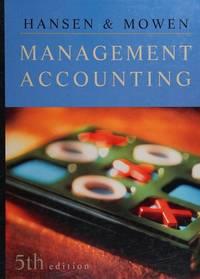Arequipa Products has two plants that manufacture a line of recliners. One is lo- cated in Denver
Question:
Arequipa Products has two plants that manufacture a line of recliners. One is lo- cated in Denver and the other in Fresno. Each plant is set up as a profit center. During the past year, both plants sold the regular model for $450. Sales volume averages 20,000 units per year in each plant. Recently, the Fresno plant reduced the price of the regular model to $400. Discussion with the Fresno manager revealed that the price reduction was possible because the plant had reduced its manufacturing and selling costs by decreasing “nonvalue-added costs.” The Fresno plant manufactur- ing and selling costs for the regular chair were $350 per unit. The Fresno manager offered to loan the Denver plant his cost accounting manager to help it achieve sim- ilar results. The Denver plant manager readily agreed, knowing that his plant must keep pace—not only with the Fresno plant but also with competitors. A local com- petitor had also reduced its price on a similar model, and Denver's marketing man- ager had indicated that the price must be matched or sales would drop dramatically.In fact, the marketing manager suggested that if the price were dropped to $390 by the end of the year, the plant could expand its share of the market by 20 percent.
The plant manager agreed but insisted that the current profit per unit must be maintained, and he wants to know if the plant can at least match the $350-per-unit cost of the Fresno plant. He also wants to know if the plant can achieve the cost reduction using the approach of the Fresno plant.
The plant controller and the Fresno cost accounting manager have assembled the following data for the most recent year. The actual cost of inputs, their valueadded (ideal) quantity levels, and the actual quantity levels are provided (for production of 20,000 units). Assume there is no difference between actual prices of activity units and standard prices.
SQ AQ Actual Cost Materials (lb) 237,500 250,000 $5,250,000 Labor (hr) 57,000 60,000 750,000 Setups (hr) — 4,000 300,000 Material handling (moves) — 10,000 700,000 Warranties (no. repaired) — 10,000 1,000,000 Total $8,000,000 Required:
1. Calculate the target cost for expanding the Denver market share by 20 percent, assuming that the per-unit profitability is maintained as requested by the plant manager.
2. Calculate the nonvalue-added cost per unit. Assuming that nonvalue-added costs can be reduced to zero, can the Denver plant match the Fresno plant's perunit cost? Can the target cost for expanding market share be achieved? What actions would you take if you were the plant manager?
3. Describe the role benchmarking played in the efforts of the Denver plant to protect and improve its competitive position.
Step by Step Answer:






